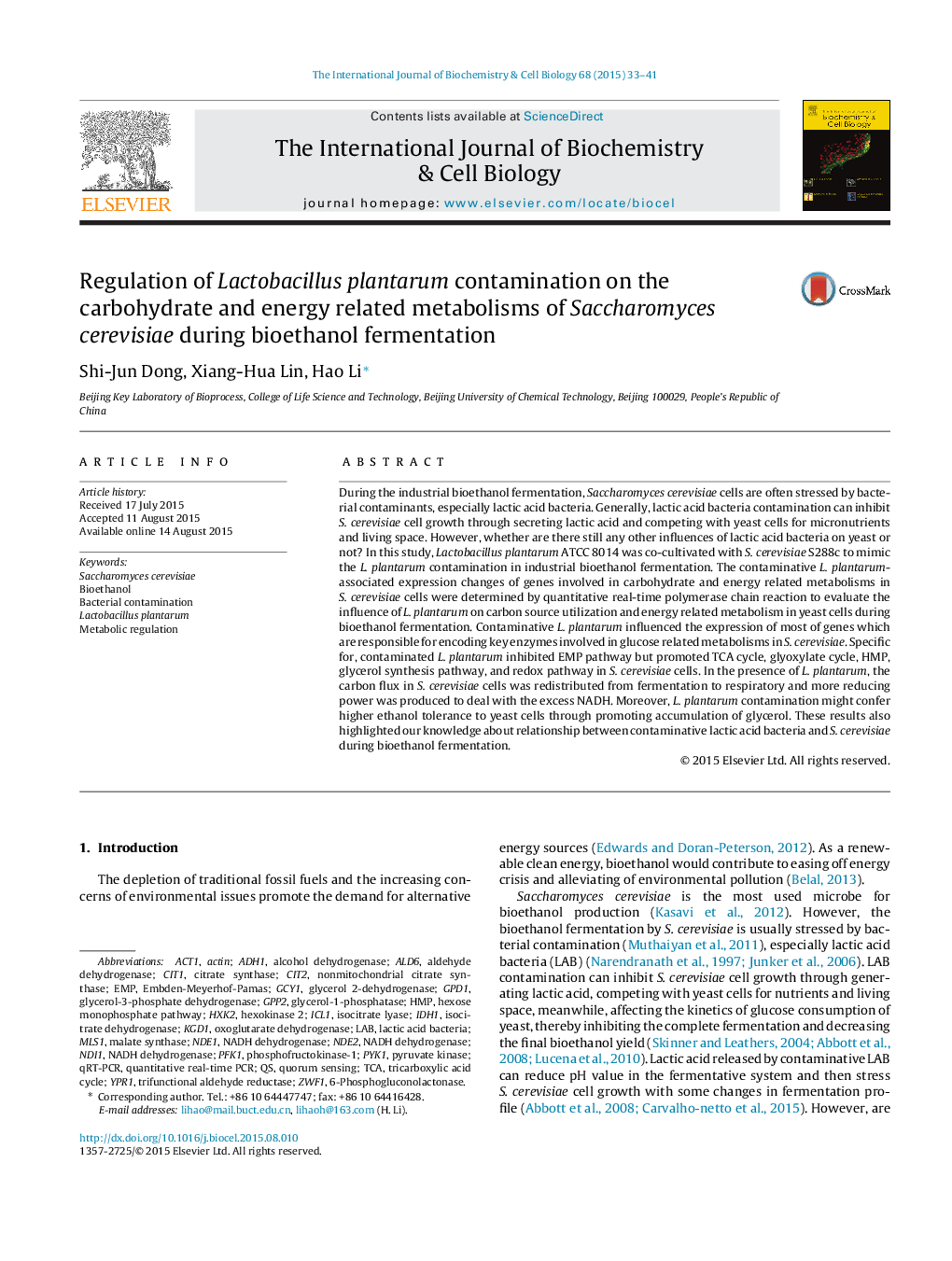| کد مقاله | کد نشریه | سال انتشار | مقاله انگلیسی | نسخه تمام متن |
|---|---|---|---|---|
| 1983444 | 1539876 | 2015 | 9 صفحه PDF | دانلود رایگان |

• L. plantarum contamination regulated gene expression of S. cerevisiae cells.
• L. plantarum contamination regulated the carbon flux of S. cerevisiae cells.
• Carbon flux in S. cerevisiae turned from fermentation to respiratory.
• L. plantarum contamination might confer higher ethanol tolerance to yeast cells.
During the industrial bioethanol fermentation, Saccharomyces cerevisiae cells are often stressed by bacterial contaminants, especially lactic acid bacteria. Generally, lactic acid bacteria contamination can inhibit S. cerevisiae cell growth through secreting lactic acid and competing with yeast cells for micronutrients and living space. However, whether are there still any other influences of lactic acid bacteria on yeast or not? In this study, Lactobacillus plantarum ATCC 8014 was co-cultivated with S. cerevisiae S288c to mimic the L. plantarum contamination in industrial bioethanol fermentation. The contaminative L. plantarum-associated expression changes of genes involved in carbohydrate and energy related metabolisms in S. cerevisiae cells were determined by quantitative real-time polymerase chain reaction to evaluate the influence of L. plantarum on carbon source utilization and energy related metabolism in yeast cells during bioethanol fermentation. Contaminative L. plantarum influenced the expression of most of genes which are responsible for encoding key enzymes involved in glucose related metabolisms in S. cerevisiae. Specific for, contaminated L. plantarum inhibited EMP pathway but promoted TCA cycle, glyoxylate cycle, HMP, glycerol synthesis pathway, and redox pathway in S. cerevisiae cells. In the presence of L. plantarum, the carbon flux in S. cerevisiae cells was redistributed from fermentation to respiratory and more reducing power was produced to deal with the excess NADH. Moreover, L. plantarum contamination might confer higher ethanol tolerance to yeast cells through promoting accumulation of glycerol. These results also highlighted our knowledge about relationship between contaminative lactic acid bacteria and S. cerevisiae during bioethanol fermentation.
During the industrial bioethanol fermentation, Lactobacillus plantarum contamination might regulate the carbohydrate and energy related metabolisms of Saccharomyces cerevisiae. In the presence of L. plantarum, the carbon flux in S. cerevisiae cells was redistributed from fermentation to respiratory and more reducing power was produced to deal with the excess NADH. Moreover, L. plantarum contamination might confer higher ethanol tolerance to yeast cells through promoting accumulation of glycerol. These results also highlighted our knowledge about relationship between contaminative LAB and S. cerevisiae during bioethanol fermentation.Figure optionsDownload high-quality image (256 K)Download as PowerPoint slide
Journal: The International Journal of Biochemistry & Cell Biology - Volume 68, November 2015, Pages 33–41